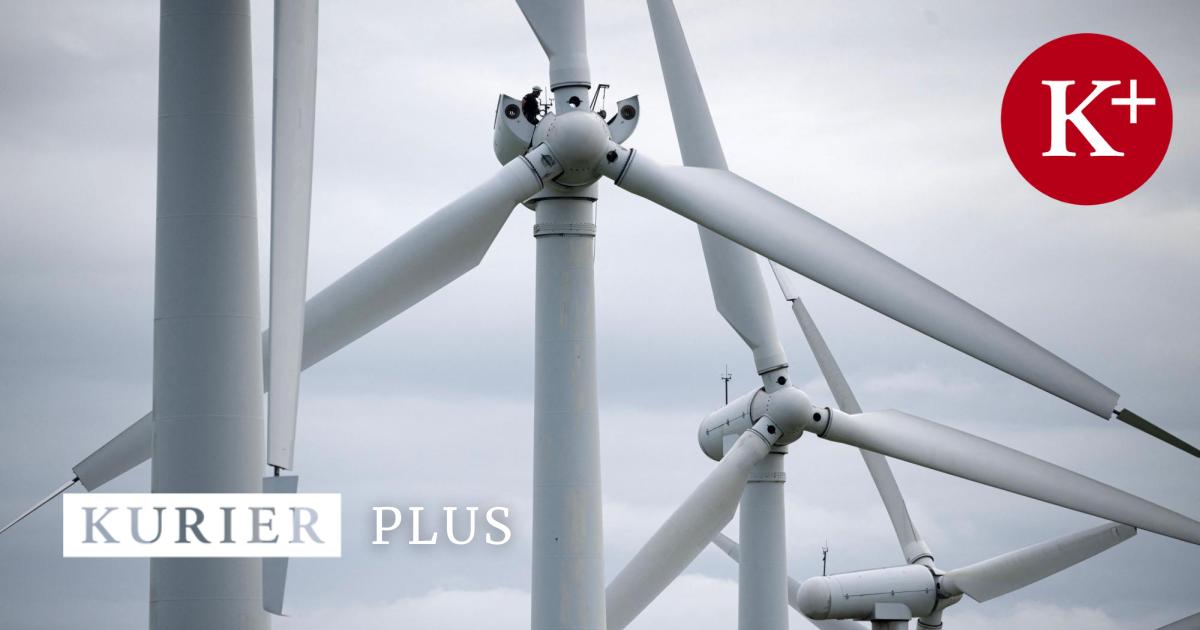Twice as much electricity, half as much as wind and sun
For the “Electricity Strategy 2040”, the electricity demand up to 2040 was estimated and examined to determine which generation technologies could meet this demand safely and all year round. The decisive factor here is the Mix of renewable energies says Michael Strugl, President of Austria’s Energy. According to calculations, electricity demand in 2040 is expected to 145.2 terawatt hours This is almost exactly double today’s electricity demand of 73 TWh.
146.5 terawatts must be generated. The largest part of this (58.1 TWh) is to be provided by hydropower as before. Around half of the electricity is to be generated by wind (39.9 TWh) and photovoltaics (32.6 TWh). This shows a large Difference to the Austrian Network Infrastructure Plan (ÖNIP), which the Federal Ministry for Climate Protection presented in April. It contains the Weighting exactly the opposite Photovoltaics are expected to deliver 41 TWh, wind only 29 TWh. “In our opinion, this is not the right mix,” says Strugl.
Wind flattens peaks and delivers in winter
Photovoltaics sometimes provide large production peaks and this is relatively evenly distributed across the country, explains Strugl. If only part of the electricity generated can be used at these times, this puts a strain on the power grid. More powerful lines and more storage options are then needed. If the share of wind power in the electricity mix is increased, the Production curve flattened In addition, wind power often delivers energy precisely at Electricity when PV and hydropower declineThis was also seen during the rainy last few days. River power stations had to be shut down because of the flooding, the sun barely penetrated the clouds, but the wind blew strongly.
Over the course of the year, wind power also supplies more electricity in the winter monthswhich complements the declining hydroelectric and PV power production. Currently, photovoltaic expansion in Austria is progressing well, and wind energy is behind the target path back.
Models become more precise
Why the Electricity Strategy 2040 is so different results Danny Güthlein, co-managing director of the energy supplier Kelag, explains how the ÖNIP comes into play: “Modelling is better from year to year The fact that the ÖNIP evaluates photovoltaics too positively was already a point of criticism after its publication.”
The new study does not claim to be the absolute truth. In the future, for example, even more detailed calculations where, for example, electricity supply and demand in 2040 are simulated with an hourly resolution. The ÖNIP is also no binding plan of the Climate Protection Ministry, explains Barbara Schmidt, Secretary General of Austria’s Energy. The different calculations are intended to Basis for discussion for the creation of an expansion plan.
Join forces and stop scaremongering
The most important message of the new study is that the decarbonization of the electricity system can work if done right, says Michael Strugl. The restructuring is necessary to increase the attractiveness of the Business location Austria and to maintain a high Security of supply From the energy industry’s point of view, 2040 is a time horizon that makes it necessary to to start planning now Massive political support is also necessary: ”We will need technical innovations, skilled workers and we need planning security, investment security and legal certainty.”
According to Danny Güthlein, it is also important to have a fact-based societal dialogue “After the election, one should move away from fear and prejudice driven representations“, especially with regard to wind power. Switzerland could be a model for this. The population there voted on the expansion of renewable energies in June. The issue was explained transparently by a broad alliance of politicians, business, environmental organizations and energy suppliers. Almost 70 percent voted in favor.

Attention Required! | Cloudflare
Attention Required! | Cloudflare
Attention Required! | Cloudflare
Attention Required! | Cloudflare
✨ Horóscopo del Día – 24 de Septiembre de 2024: Predicciones Cósmicas con el Tarot del Maestro Jesús �� – Tarot de Jesús: Consultas de Tarot en Línea con Pago por Bizum
Descubre tarot bizum en español y conecta con tu espiritualidad a través de lecturas online accesibles. – Tarot de Jesús: Consultas de Tarot en Línea con Pago por Bizum
new products – Beauty Products Today – Apple Podcasts
Attention Required! | Cloudflare
Attention Required! | Cloudflare
Attention Required! | Cloudflare
Attention Required! | Cloudflare
Attention Required! | Cloudflare
Attention Required! | Cloudflare
Attention Required! | Cloudflare
Send Comps in Arlington, Virginia – Real Estate | Bunity
Send Comps – CheckYa
Send Comps – CheckYa
Send Comps – Real Estate Business in Virginia, Arlington | Citymapia.com
Send Comps, Arlington – 22201, Virginia, USA
Send Comps – virginia | About Us
Send Comps – Virginia – Contact Us, Phone Number, Address and Map
BigStartups – Global Business Networking Platform
Send Comps – Arlington Virginia | about.me
ArtStation – Send Comps
ArtStation – Send Comps
Send Comps :: Behance
500px
free-netflix-account-and-password-b5 · GitHub Topics · GitHub
tiktok-recharge-coins-free-now · GitHub Topics · GitHub
100k-free-tiktok-coins-2024-generator · GitHub Topics · GitHub